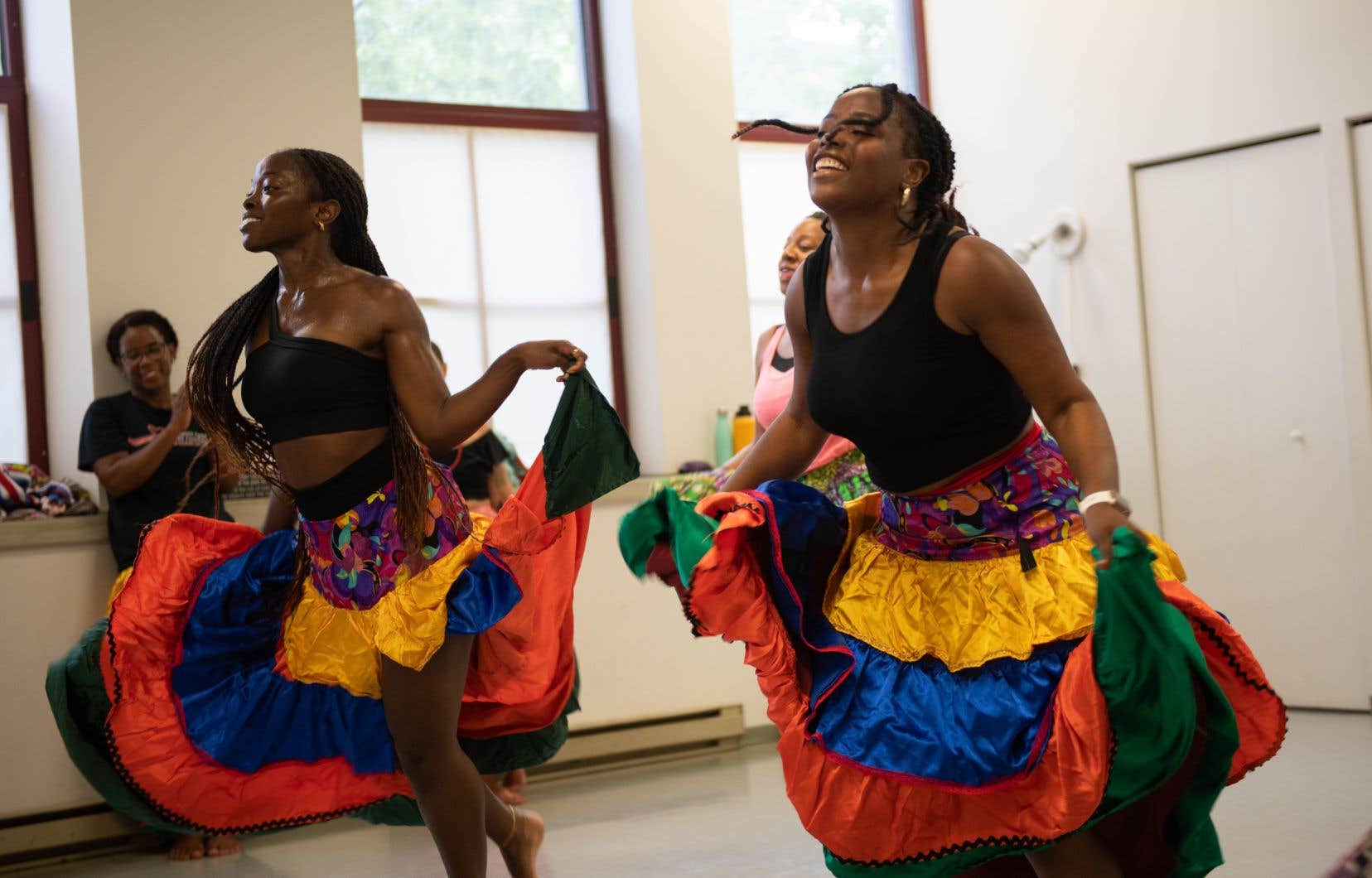The traditional dances of black communities are extremely diverse and vary from region to region. In Montreal, we teach these expressive movements with the aim of telling stories, awakening memories and building bridges between generations.
The Ekspresyon dance center, in operation since 2017 and specializing in traditional Haitian dance, is an example of this mission of mutual understanding made possible, among other things, by the enthusiasm observed among learners. From then on, a conversation is created, which sheds light on Haitian history, in addition to reducing taboos and stereotypes, according to Aïka Mathelier, artistic director and also social worker.
Go back to the roots
Traditional dances are therefore a means of transmitting the history and culture of black communities. “Without going into deep history, we have this tendency, before certain courses, to explain certain historical landmarks,” emphasizes Aïka Mathelier. For example, when I have drummers, they can explain the origins of their instrument, because there are different families of drums with different sounds and roles. »
This allows us to contextualize the origins of these dances, such as ibo, which bears the name of the Ibo people of West Africa, or like yanvalou, a dance which comes from Benin and which is characterized by fluid movements reminiscent of waves of an ocean. “All of these stories need to be remembered because, specifically in the case of Haiti, they tell the story of the path that led to the Haitian Revolution of 1804.”
Most dances come from an oral tradition, and passing them on strengthens cultural identity and resilience. Originally from Cameroon, Loïc Nguemle Sipeyou, known under the artist name Loïc Reyel, also gives importance to this education within his dance school, Afrovybz Canada. “We take the time to explain the birth of Afro dances. This culture of knowledge is important to me, because many young people who have left Africa lose this culture. And that’s one of the goals I’m looking for, to rebuild that connection. »
Contemporary adaptation
Like all dances, traditional ones evolve. “That’s why we avoid calling it folklore,” explains Aïka Mathelier. It is no longer danced or taught in the same way, whether in Haiti or here. The idea of folklore implies that it remains frozen in time. » Traditional movements mix with several techniques – such as ballet, hip-hop, contemporary – which are part of the teachers’ background.
For his part, Loïc Reyel takes credit for this modernization, because the dances he teaches, although they draw on traditional African dances, are quite young. The 2000s saw the emergence of several of these new dances, often influenced by contemporary music, which adds a different amplification of movements depending on the dancer and choreographer.
Intergenerational bridges
From what we observe, the teaching of these dances helps to bring together different generations within communities. So, people in their twenties can rub shoulders with people in their fifties or sixties. “As long as the body moves, it’s open,” recalls Aïka Mathelier. It opens up some pretty interesting discussions between these different age groups who live the experience differently. »
One of the dances that Loïc teaches is the mbolé, a relatively new dance and very popular with the younger generation. This phenomenon is amplified by social networks, according to Loïc Reyel. “It made it possible to democratize what we do at home, and that’s what made people start to be interested in this kind of dance. I also have the impression that it is because of the modern movements in which young people identify. »
So who does this dance heritage belong to? There is a major debate within communities, according to Loïc Reyel, which goes so far as to raise the question of cultural appropriation. “Some people believe that these are not dances to teach because of their connection to spirituality and others fight to share them with everyone. It’s a fight, and everyone does it in their own way. »
Take back power
“Dance is a way of working on your body, your own energy, of refocusing on yourself and therefore of asserting yourself,” believes Aïka Mathelier. Through different rhythms, we will discover who we are, learn to overcome certain barriers. » Each rhythm brings something. For example, the nago, of warrior inspiration, can help in cases where one needs to express anger, according to the social worker.
For his part, Loïc Reyel witnesses the joy of living that African dances provide, transcending the barriers of time and language to touch people universally. “These are very joyful dances, often created to survive a violent context. It is this well-being that I try to promote, the one that makes you forget everything until the next day. » Coupé-décalé, which originated within the Ivorian community in the 2000s during an unstable political period, is an example of this joy mixed with hope.
Whether for Ekspresyon or Afrovybz, keeping traditions and new dances alive is the primary task. These spaces, open to everyone regardless of age, body or gender, are above all “spaces for dancing, learning and communicating”, underlines Aïka Mathelier.
This content was produced by the Special Publications team at Duty, relating to marketing. The writing of the Duty did not take part.
